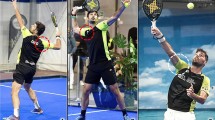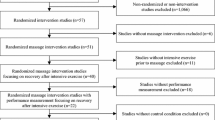Abstract
To further the understanding of long-term sequelae as a result of repetitive head impacts in sports, in vivo head impact exposure data are critical to expand on existing evidence from animal model and laboratory studies. Recent technological advances have enabled the development of head impact sensors to estimate the head impact exposure of human subjects in vivo. Previous research has identified the limitations of filtering algorithms to process sensor data. In addition, observer and/or video confirmation of sensor-recorded events is crucial to remove false positives. The purpose of the current study was to conduct a systematic review to determine the proportion of published head impact sensor data studies that used filtering algorithms, observer confirmation and/or video confirmation of sensor-recorded events to remove false positives. Articles were eligible for inclusion if collection of head impact sensor data during live sport was reported in the methods section. Descriptive data, confirmation methods and algorithm use for included articles were coded. The primary objective of each study was reviewed to identify the primary measure of exposure, primary outcome and any additional covariates. A total of 168 articles met the inclusion criteria, the publication of which has increased in recent years. The majority used filtering algorithms (74%). The majority did not use observer and/or video confirmation for all sensor-recorded events (64%), which suggests estimates of head impact exposure from these studies may be imprecise.


Similar content being viewed by others
References
Bari, S., D. O. Svaldi, I. Jang, et al. Dependence on subconcussive impacts of brain metabolism in collision sport athletes: an MR spectroscopic study. Brain Imaging Behav. 13(3):735–749, 2019.
Broglio, S. P., D. Martini, L. Kasper, J. T. Eckner, and J. S. Kutcher. Estimation of head impact exposure in high school football: implications for regulating contact practices. Am. J. Sports Med. 41(12):2877–2884, 2013.
Brokaw, E. B., M. S. Fine, K. E. Kindschi, et al. Cross-sectional evaluation of visuomotor tracking performance following subconcussive head impacts. Technol. Health Care 26(1):109–118, 2018.
Carey, L., P. Stanwell, D. P. Terry, et al. Verifying head impacts recorded by a wearable sensor using video footage in rugby league: a preliminary study. Sports Med. Open. 5(1):9, 2019.
Caswell, S. V., P. Kelshaw, A. E. Lincoln, et al. Game-related impacts in high school boys’ lacrosse. Orthop. J. Sports Med. 7(4):2325967119835587, 2019.
Caswell, S. V., A. E. Lincoln, H. Stone, et al. Characterizing verified head impacts in high school girls’ lacrosse. Am. J. Sports Med. 45(14):3374–3381, 2017.
Cortes, N., A. E. Lincoln, G. D. Myer, et al. Video analysis verification of head impact events measured by wearable sensors. am. j. sports Med. 45(10):2379–2387, 2017.
Crisco, J. J., J. J. Chu, and R. M. Greenwald. An algorithm for estimating acceleration magnitude and impact location using multiple nonorthogonal single-axis accelerometers. J. Biomech. Eng. 126(6):849–854, 2004.
Dickson, T. J., S. Trathen, G. S. Waddington, F. A. Terwiel, and D. Baltis. A human factors approach to snowsport safety: novel research on pediatric participants’ behaviors and head injury risk. Appl. Ergon. 53(A):79–86, 2016.
Friess, S. H., R. N. Ichord, J. Ralston, et al. Repeated traumatic brain injury affects composite cognitive function in piglets. J. Neurotrauma 26(17):1111–1121, 2009.
Gwin, J. T., J. J. Chu, S. G. Diamond, et al. An investigation of the NOCSAE linear impactor test method based on in vivo measures of head impact acceleration in American football. J. Biomech. Eng. 132(1):011006, 2010.
Huber, C. M., D. A. Patton, K. Jenkins, and K. B. Arbogast. Video analysis of head impact sensor data from adolescent soccer players. Arch. Phys. Med. Rehabil. 99(11):e152, 2018.
Kelley, M. E., J. E. Urban, L. E. Miller, et al. Head impact exposure in youth football: comparing age- and weight-based levels of play. J. Neurotrauma 34(11):1939–1947, 2017.
Kiefer, A. W., C. A. DiCesare, P. Nalepka, et al. Less efficient oculomotor performance is associated with increased incidence of head impacts in high school ice hockey. Journal of Science and Medicine in Sport. 21(1):4–9, 2018.
King, D. A., P. A. Hume, M. Brughelli, and C. Gissane. Instrumented mouthguard acceleration analyses for head impacts in amateur rugby union players over a season of matches. Am. J. Sports Med. 43(3):614–624, 2015.
Kuo, C., L. Wu, J. Loza, et al. Comparison of video-based and sensor-based head impact exposure. Biomech. Model. Mechanobiol. 13(6):e0199238, 2018.
Kuo, C., L. Wu, W. Zhao, et al. Propagation of errors from skull kinematic measurements to finite element tissue responses. Biomech. Model. Mechanobiol. 17(1):235–247, 2018.
Lamond, L. C., J. B. Caccese, T. A. Buckley, J. Glutting, and T. W. Kaminski. Linear acceleration in direct head contact across impact type, player position, and playing scenario in collegiate women’s soccer. J. Athl. Train. 53(2):115–121, 2018.
Lucas, R. M., and A. J. McMichael. Association or causation: evaluating links between “environment and disease”. Bull. World Health Organ. 83(10):792–795, 2005.
Lynall, R. C., L. B. Lempke, R. J. Johnson, M. N. Anderson, and J. D. Schmidt. A comparison of youth flag and tackle football head impact biomechanics. J. Neurotrauma 36(11):1752–1757, 2019.
McAllister, T. W., and M. McCrea. Long-term cognitive and neuropsychiatric consequences of repetitive concussion and head-impact exposure. J. Athl. Train. 52(3):309–317, 2017.
McCuen, E. C., D. O. Svaldi, K. Breedlove, et al. Collegiate women’s soccer players suffer greater cumulative head impacts than their high school counterparts. J. Biomech. 48(13):3729–3732, 2015.
McIntosh, A. S., C. Willmott, D. A. Patton, et al. An assessment of the utility and functionality of wearable head impact sensors in Australian football. J. Sci. Med. Sport. 22(7):784–789, 2019.
McKee, A. C., M. L. Alosco, and B. R. Huber. Repetitive Head Impacts and Chronic Traumatic Encephalopathy. Neurosurg. Clin. N. Am. 27(4):529–535, 2016.
Miller, L. E., E. K. Pinkerton, K. C. Fabian, et al. Characterizing head impact exposure in youth female soccer with a custom-instrumented mouthpiece. Res. Sports Med. 28(1):55–71, 2020.
Miyashita, T. L., E. Diakogeorgiou, K. Marrie, and R. Danaher. Frequency and location of head impacts in Division I men’s lacrosse players. Athl. Train. Sports Health Care. 8(5):202–208, 2016.
Moher, D., L. Shamseer, M. Clarke, et al. Preferred reporting items for systematic review and meta-analysis protocols (PRISMA-P). Syst. Rev. 4(1):1, 2015.
Nevins, D. D., K. Hildenbrand, J. Kensrud, A. Vasavada, and L. Smith. Laboratory and field evaluation of a small form factor head impact sensor in un-helmeted play. J. Sports Eng. Technol. 232(3):242–254, 2018.
O’Connor, K. L., T. Peeters, S. Szymanski, and S. P. Broglio. Individual impact magnitude vs. cumulative magnitude for estimating concussion odds. Ann. Biomed. Eng. 45(8):1985–1992, 2017.
O’Connor, K. L., S. Rowson, S. M. Duma, and S. P. Broglio. Head-impact–measurement devices: a systematic review. J. Athl. Train. 52(3):206–227, 2017.
Patton, D. A. A review of instrumented equipment to investigate head impacts in sport. Appl. Bionics Biomech. 2016:7049743, 2016.
Patton, D. A., C. M. Huber, C. C. McDonald, et al. Video confirmation of head impact sensor data from high school soccer players. Am. J. Sports Med. 48(5):1246–1253, 2020.
Press, J. N., and S. Rowson. Quantifying head impact exposure in collegiate women’s soccer. Clin. J. Sport Med. 27(2):104–110, 2017.
Qin, Y., G.-L. Li, X.-H. Xu, et al. Brain structure alterations and cognitive impairment following repetitive mild head impact: an in vivo MRI and behavioral study in rat. Behav. Brain Res. 340:41–48, 2018.
Raghupathi, R., M. F. Mehr, M. A. Helfaer, and S. S. Margulies. Traumatic axonal injury is exacerbated following repetitive closed head injury in the neonatal pig. J. Neurotrauma 21(3):307–316, 2004.
Rich, A. M., T. M. Filben, L. E. Miller, et al. Development, validation and pilot field deployment of a custom mouthpiece for head impact measurement. Ann. Biomed. Eng. 47(10):2109–2121, 2019.
Rose, S. C., K. O. Yeates, D. R. Fuerst, et al. Head impact burden and change in neurocognitive function during a season of youth football. J. Head Trauma Rehabil. 34(2):87–95, 2019.
Rose, S. C., K. O. Yeates, J. T. Nguyen, et al. Neurocognitive function and head impact burden over two seasons of youth tackle football. J. Neurotrauma 36(19):2803–2809, 2019.
Shamseer, L., D. Moher, M. Clarke, et al. Preferred reporting items for systematic review and meta-analysis protocols (PRISMA-P): elaboration and explanation. BMJ 350:g7647, 2015.
Shultz, S. R., D. F. MacFabe, K. A. Foley, R. Taylor, and D. P. Cain. Subconcussive brain injury in the long-evans rat induces acute neuroinflammation in the absence of behavioral impairments. Behav. Brain Res. 229(1):145–152, 2012.
Slemmer, J. E., and J. T. Weber. The extent of damage following repeated injury to cultured hippocampal cells is dependent on the severity of insult and inter-injury interval. Neurobiol. Dis. 18(3):421–431, 2005.
Stemper, B. D., A. S. Shah, J. Harezlak, et al. Repetitive head impact exposure in college football following an NCAA rule change to eliminate two-a-day preseason practices: a study from the NCAA-DoD CARE Consortium. Ann. Biomed. Eng. 47(10):2073–2085, 2019.
Swartz, E. E., J. L. Myers, S. B. Cook, et al. A helmetless-tackling intervention in american football for decreasing head impact exposure: a randomized controlled trial. J. Sci. Med. Sport. 22(10):1102–1107, 2019.
Tyson, A. M., S. M. Duma, and S. Rowson. Laboratory evaluation of low-cost wearable sensors for measuring head impacts in sports. J. Appl. Biomech. 34(4):320–326, 2018.
Willmott, C., A. S. McIntosh, T. Howard, et al. SCAT3 Changes from baseline and associations with X2 patch measured head acceleration in amateur Australian football players. J. Sci. Med. Sport. 21(5):442–446, 2018.
Wu, L. C., C. Kuo, J. Loza, et al. Detection of American football head impacts using biomechanical features and support vector machine classification. Sci. Rep. 8:855, 2018.
Wu, L. C., V. Nangia, K. Bui, et al. In vivo evaluation of wearable head impact sensors. Ann. Biomed. Eng. 44(4):1234–1245, 2016.
Zonner, S. W., K. Ejima, Z. W. Bevilacqua, et al. Association of increased serum S100B levels with high school football subconcussive head impacts. Front. Neurol. 10(327):1–10, 2019.
Acknowledgments
The current study was funded by the Pennsylvania Department of Health and the National Institute of Neurologic Disorders and Stroke of the National Institutes of Health (R01NS097549). The content of this systematic review is solely the responsibility of the authors and does not necessarily represent the official views of the Pennsylvania Department of Health and/or the National Institutes of Health.
Author information
Authors and Affiliations
Corresponding author
Additional information
Associate Editor Joel Stitzel oversaw the review of this article.
Publisher's Note
Springer Nature remains neutral with regard to jurisdictional claims in published maps and institutional affiliations.
Electronic supplementary material
Below is the link to the electronic supplementary material.
Rights and permissions
About this article
Cite this article
Patton, D.A., Huber, C.M., Jain, D. et al. Head Impact Sensor Studies In Sports: A Systematic Review Of Exposure Confirmation Methods. Ann Biomed Eng 48, 2497–2507 (2020). https://doi.org/10.1007/s10439-020-02642-6
Received:
Accepted:
Published:
Issue Date:
DOI: https://doi.org/10.1007/s10439-020-02642-6




